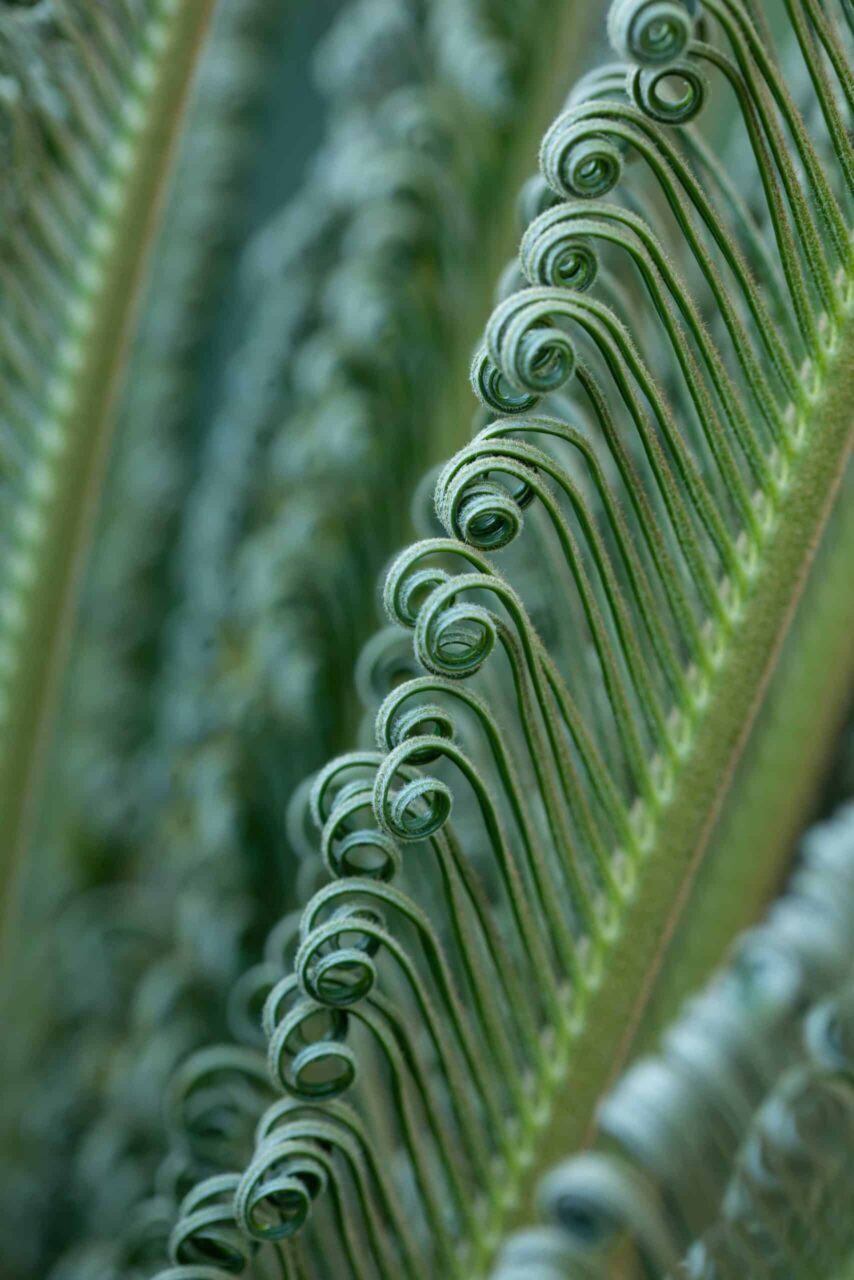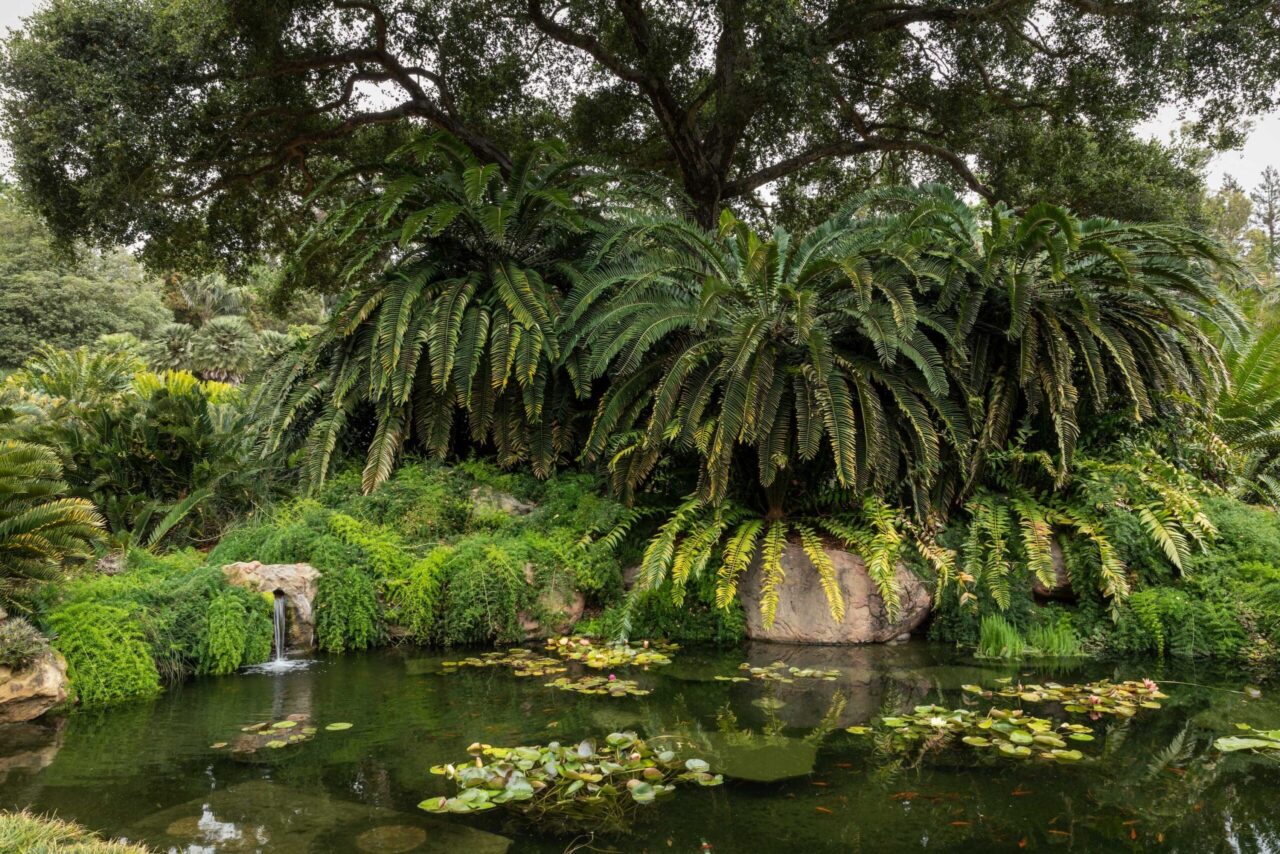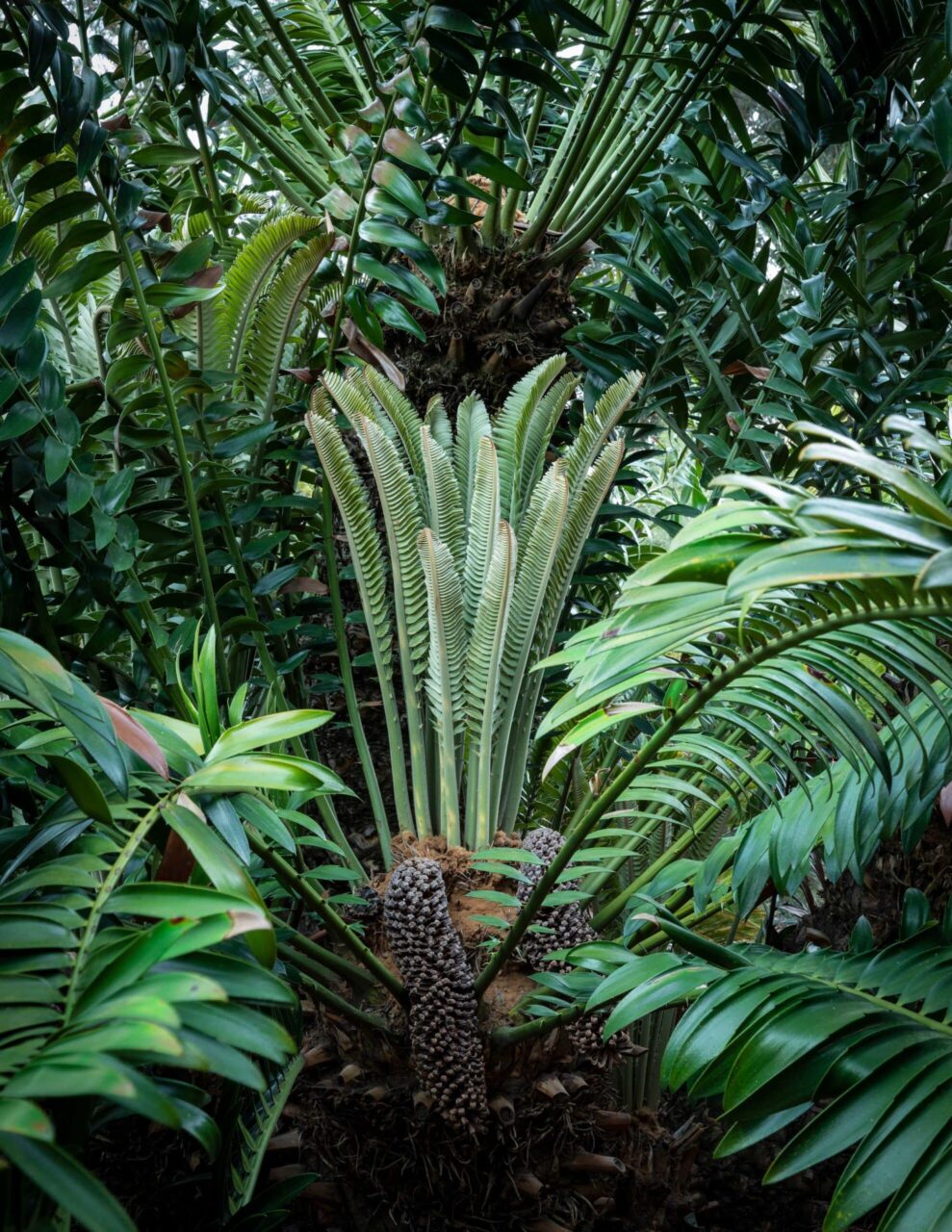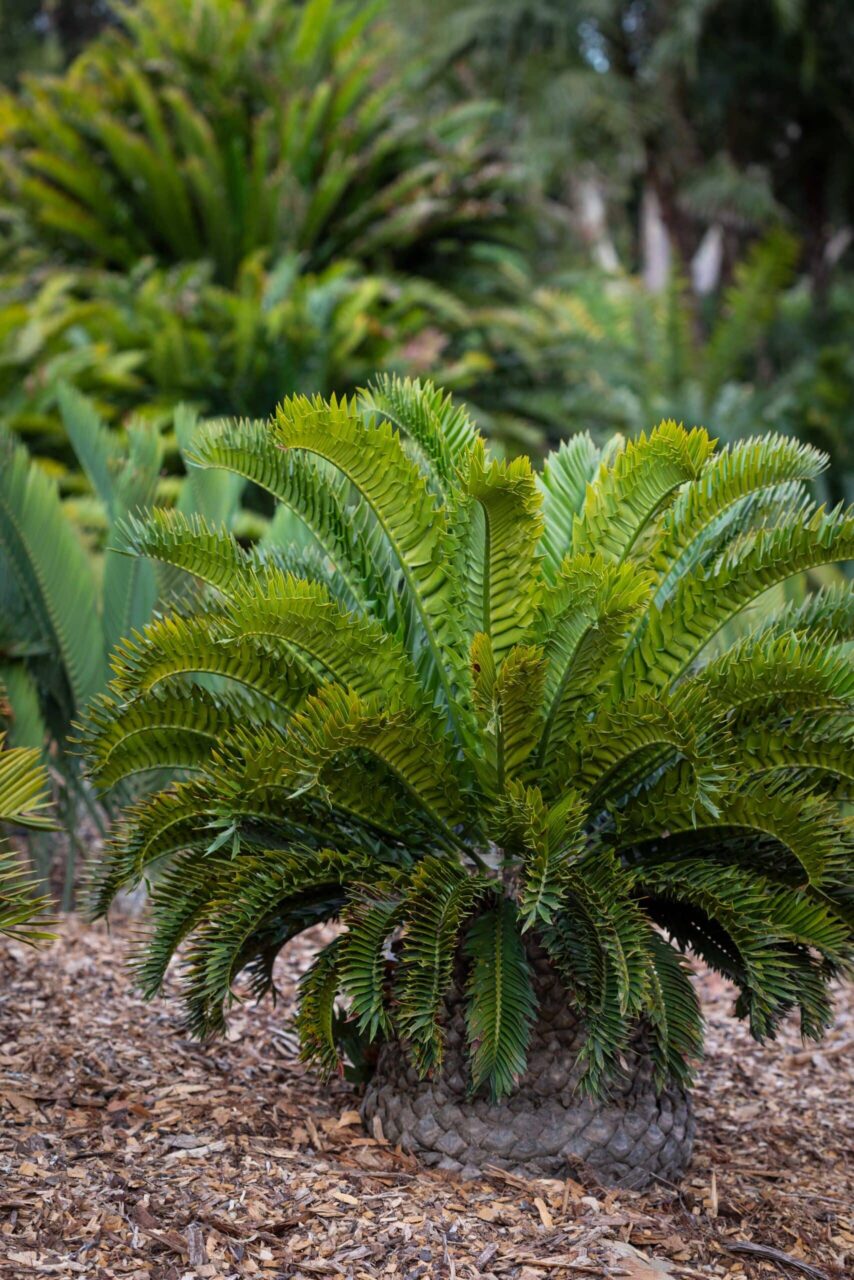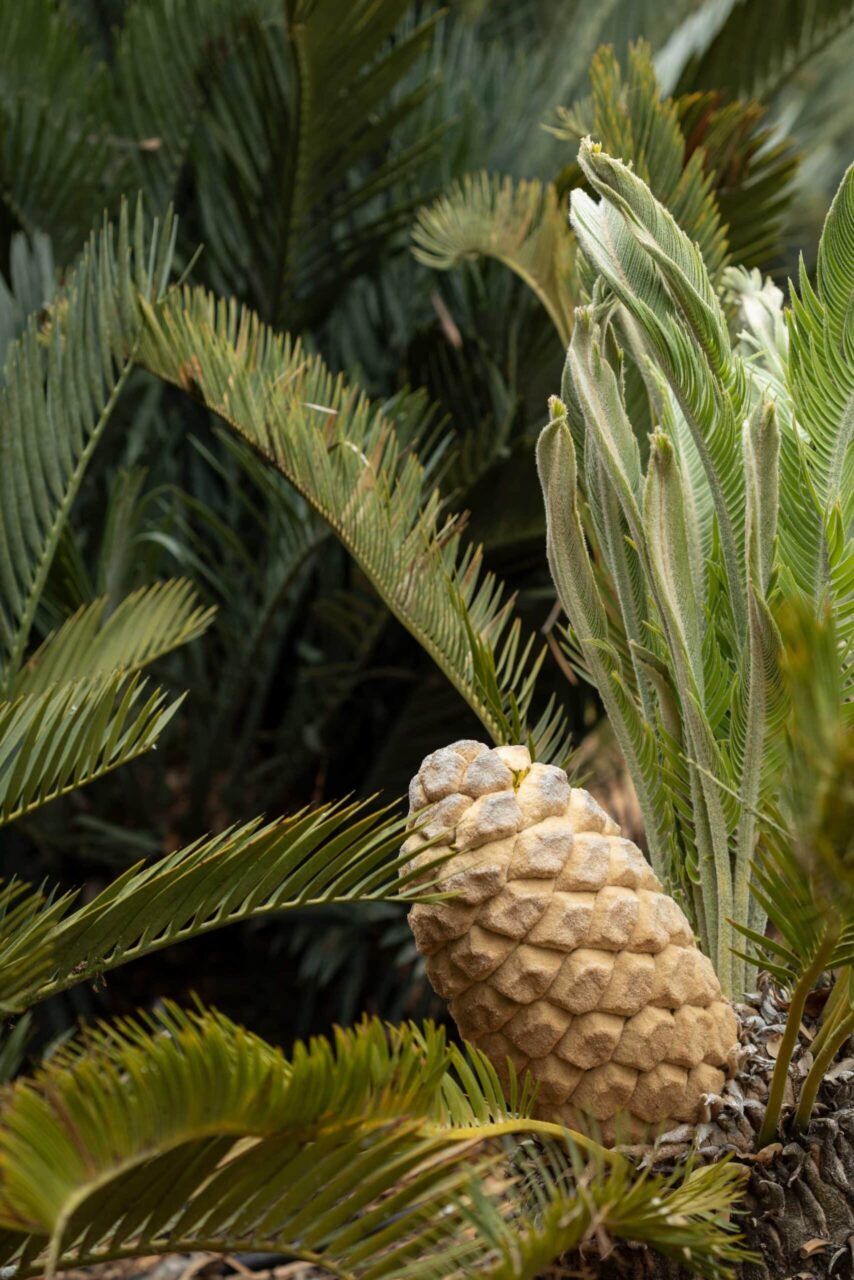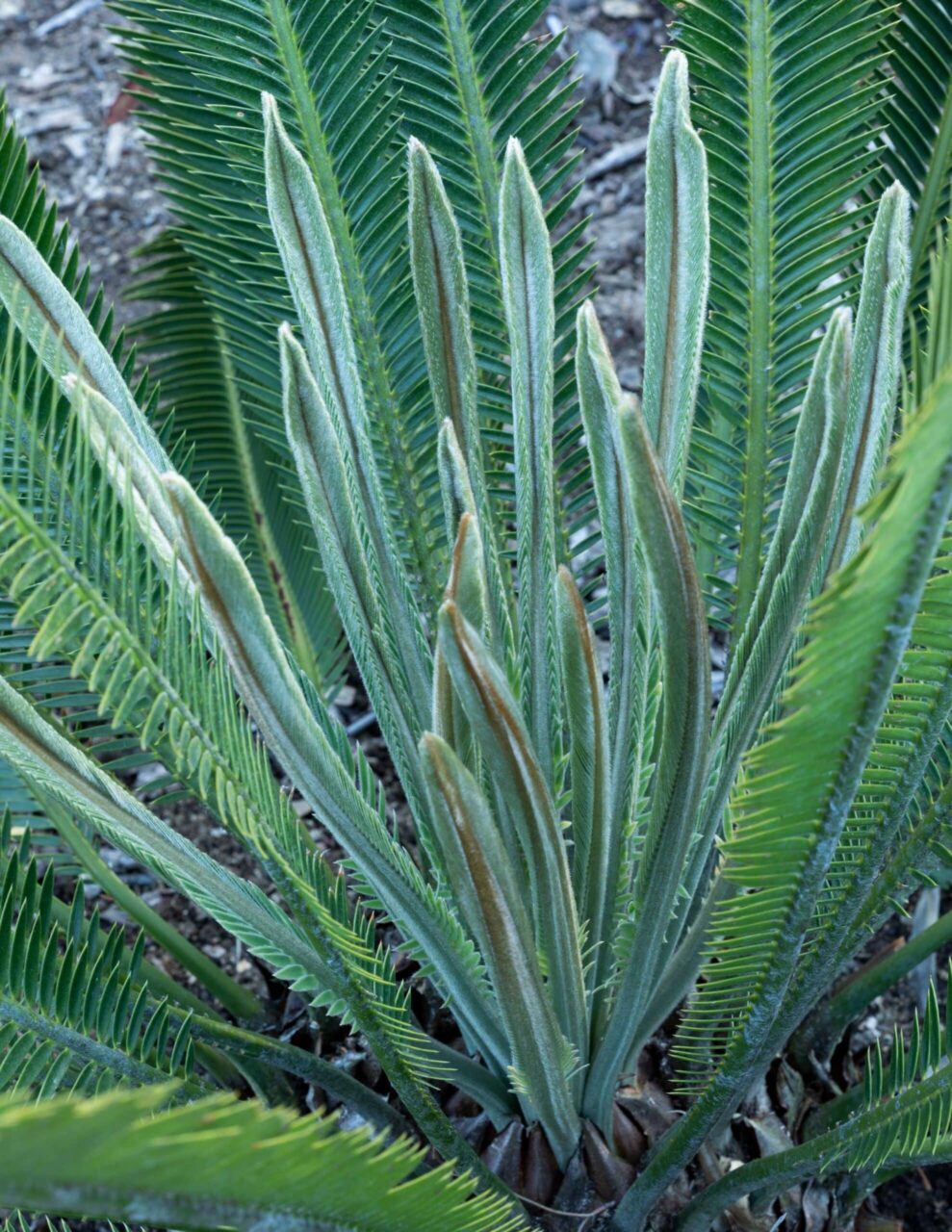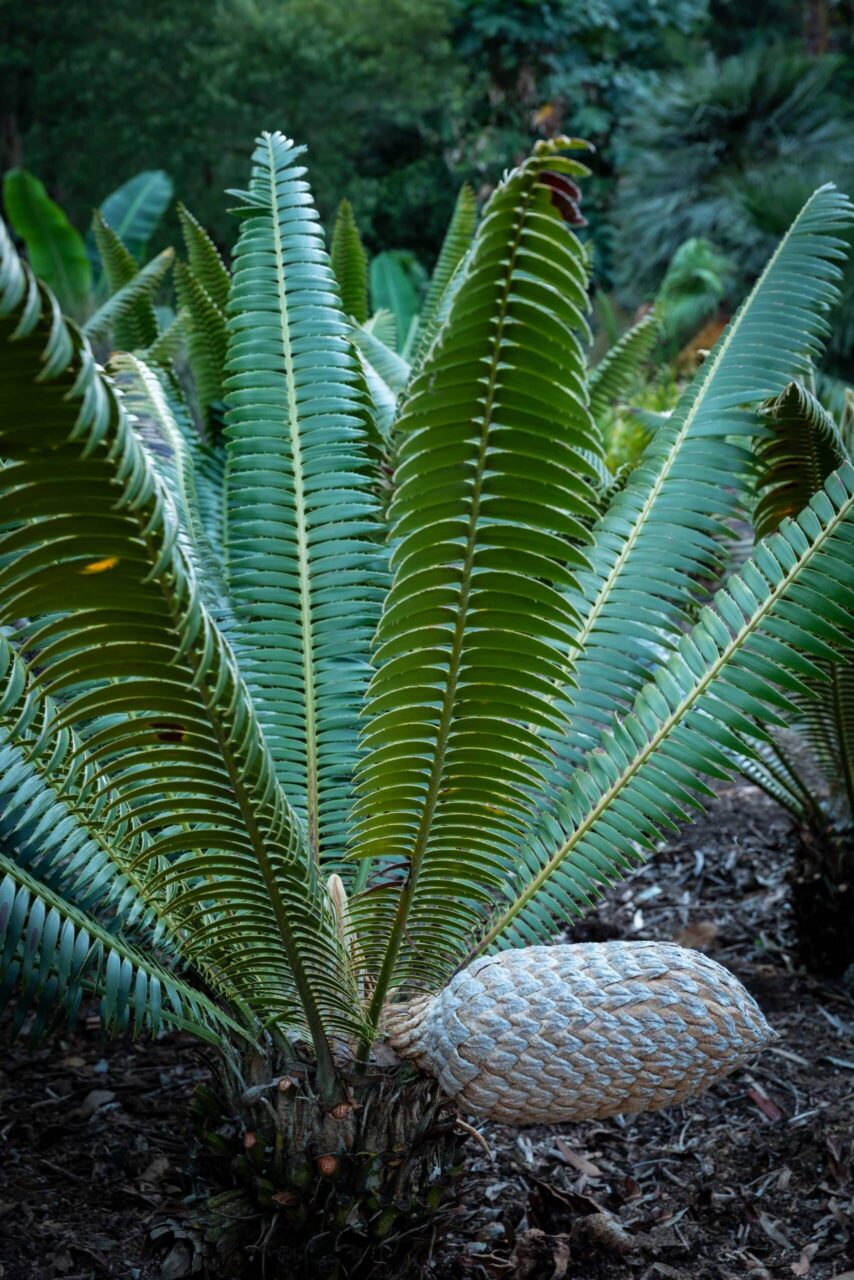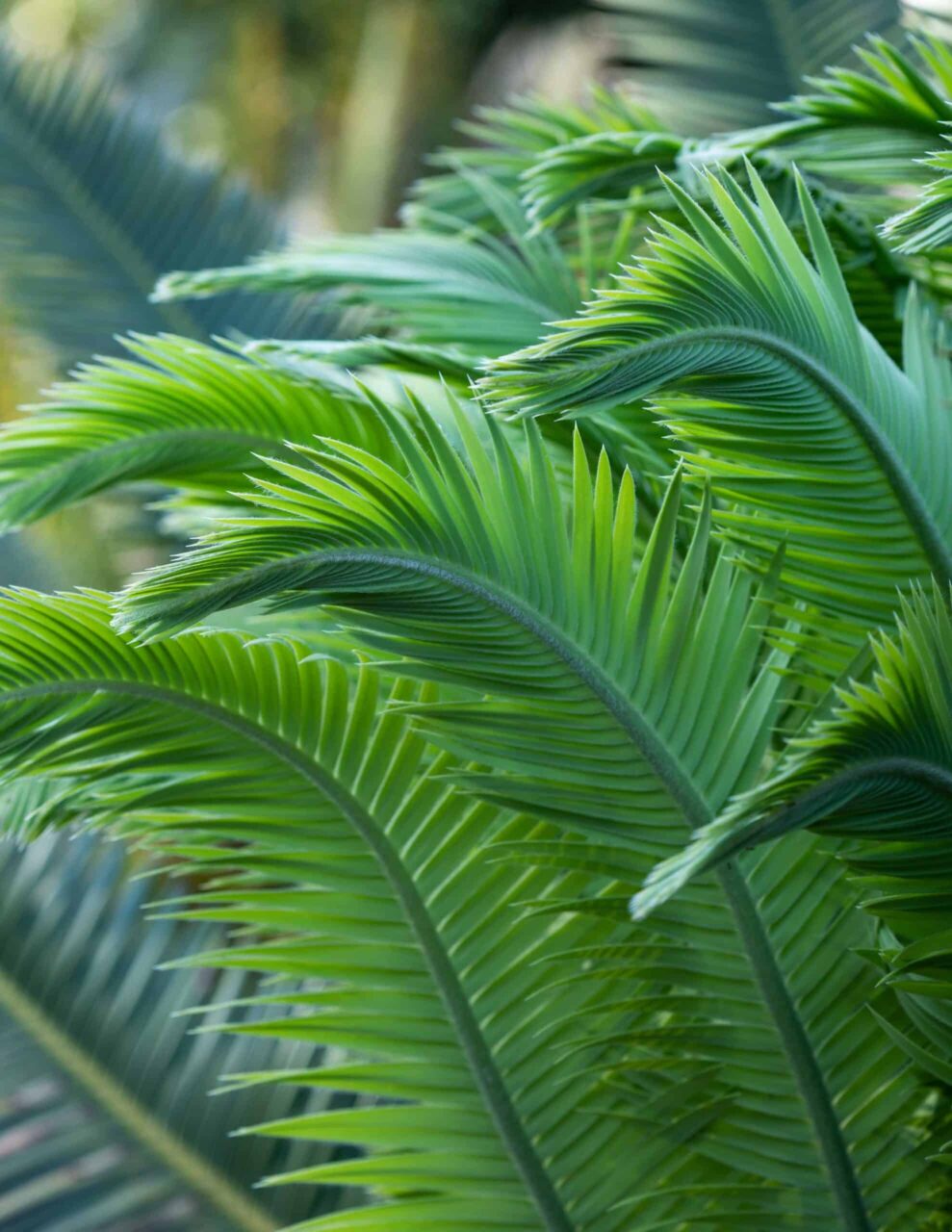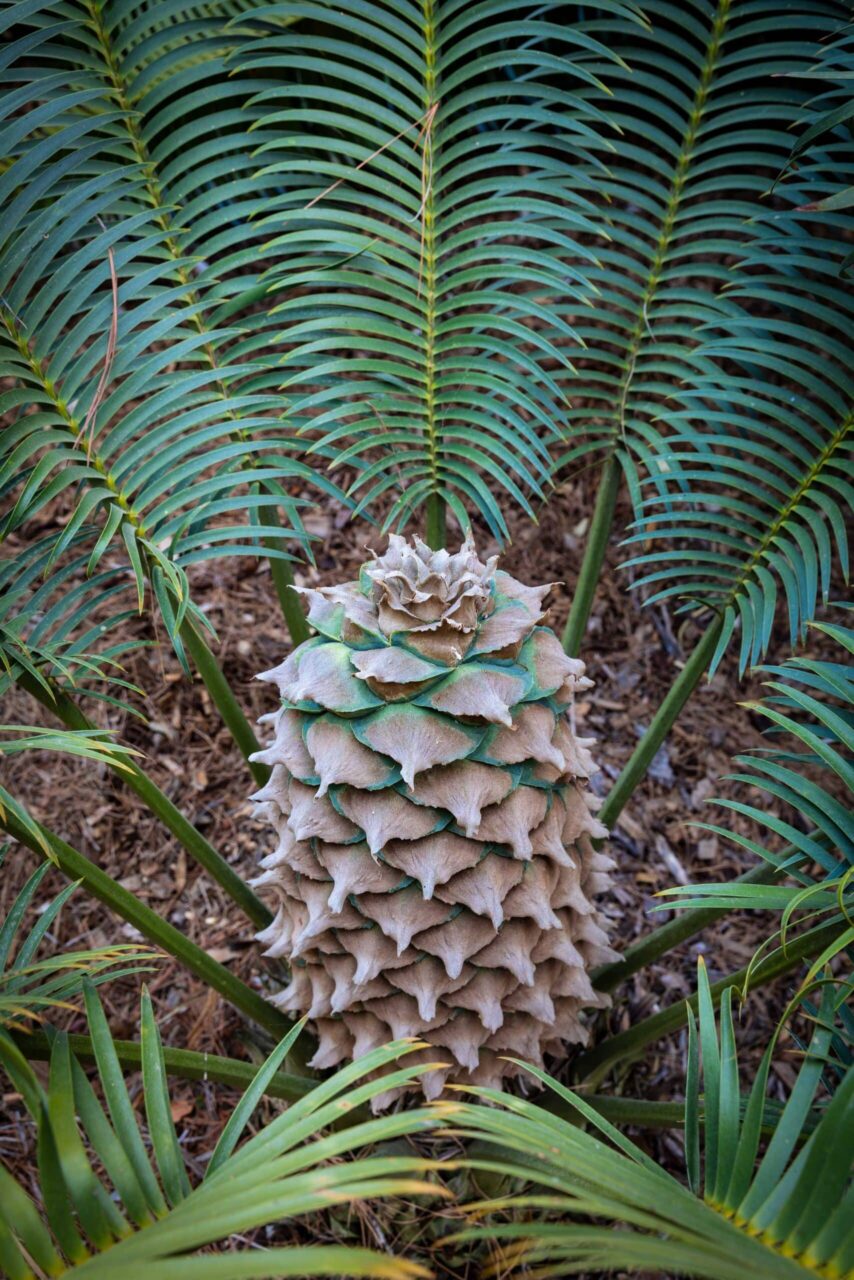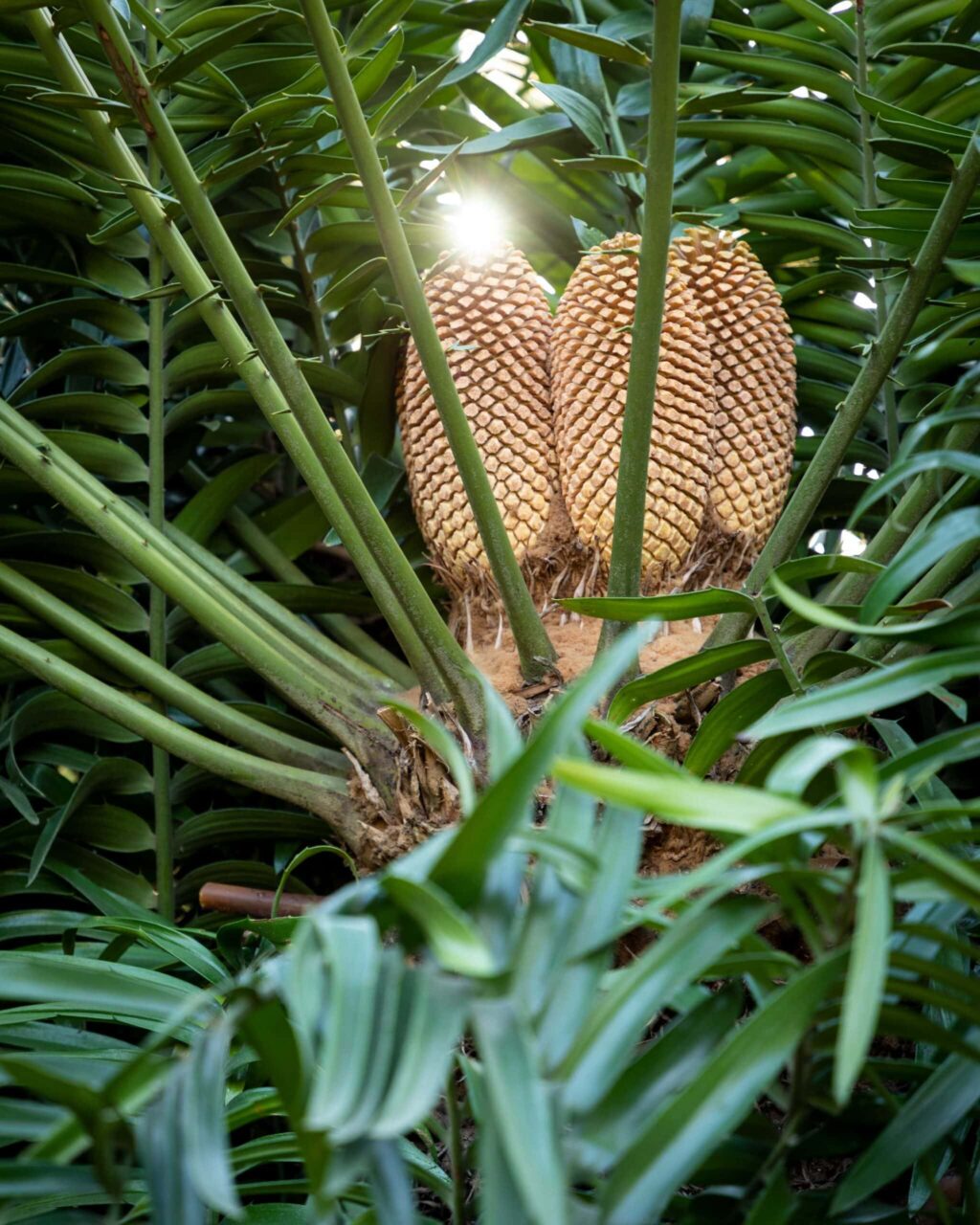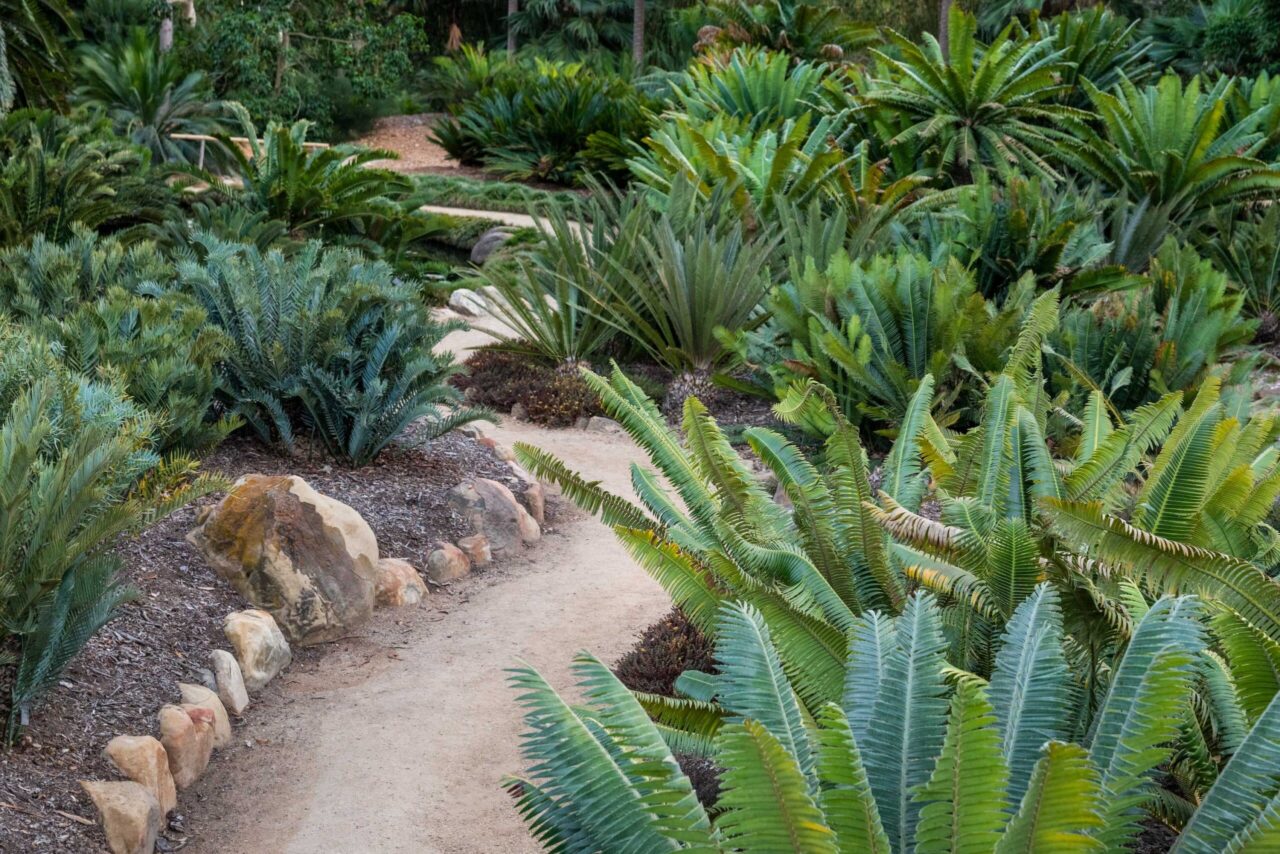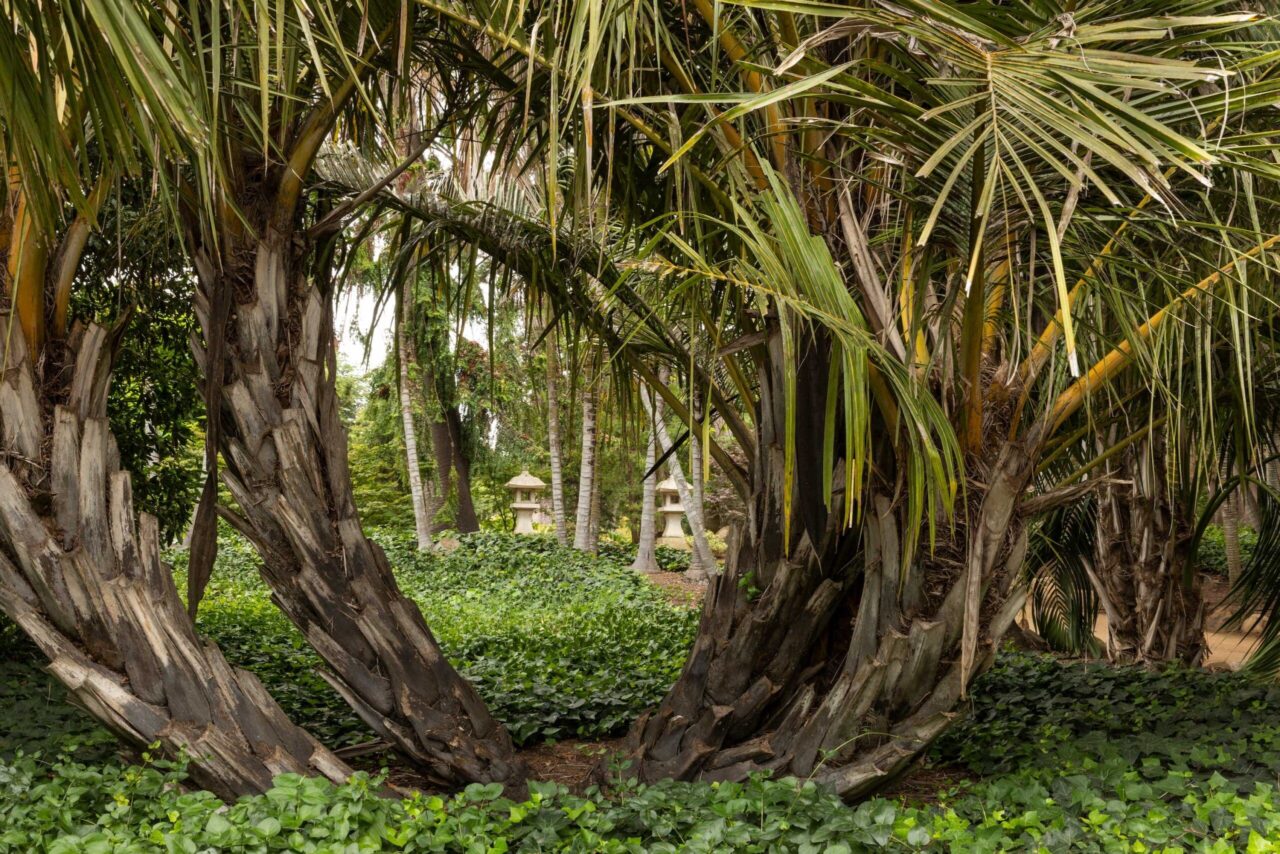Cycad Garden
Many refer to the Jurassic Period as the “Age of Cycads"
Cycad Garden
Many refer to the Jurassic Period as the “Age of Cycads.”
Today, these unusual cone-bearing plants are one the most threatened plant groups on the planet due to over-collecting, deforestation, agricultural clearing, and urban sprawl. Lotusland cares for many species of cycads that are threatened — including five species in the collection that are believed to be extinct in the wild. Upon its completion, Charles Glass, a renowned plantsman who designed the garden, told Madame Walska, “This will be one of the greatest achievements of our lives.” Glass was not exaggerating. Lotusland’s collection is considered one of the most complete in any American public garden, with over 450 specimens and almost half of the known species.
the
Noteworthy
Features
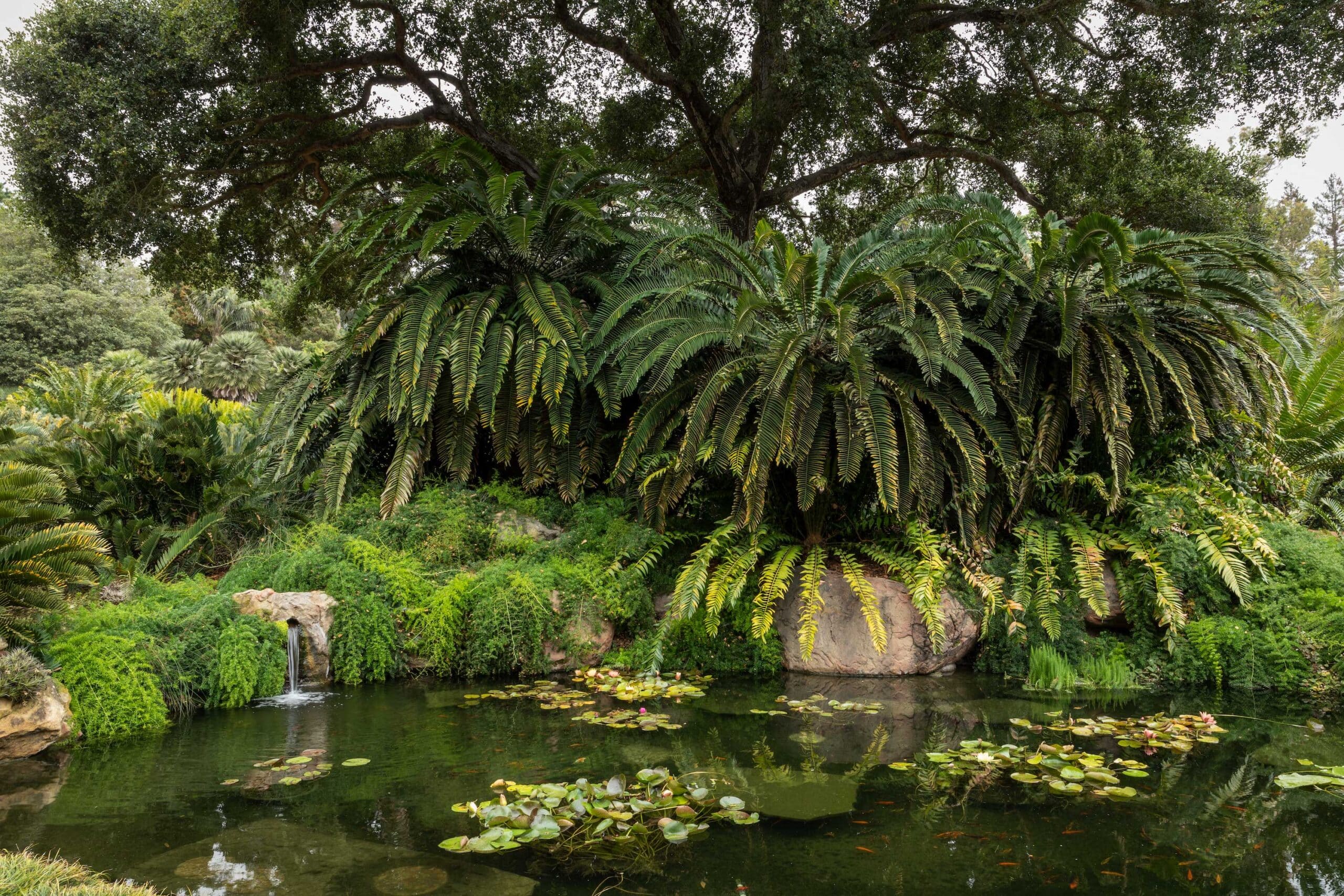
Encephalartos woodii
A single male specimen of E. woodii was discovered in the wild in 1895. The entire plant was removed between 1903 and 1916, consisting of seven offsets and four stems, and sent to Durban Botanic Garden in South Africa. From there, propagations were shared with botanic gardens around the world. All E. woodii that exist today are clones of that original plant and this species is no longer found in the wild. Lotusland is home to three E. woodii presiding over the Cycad Pond.
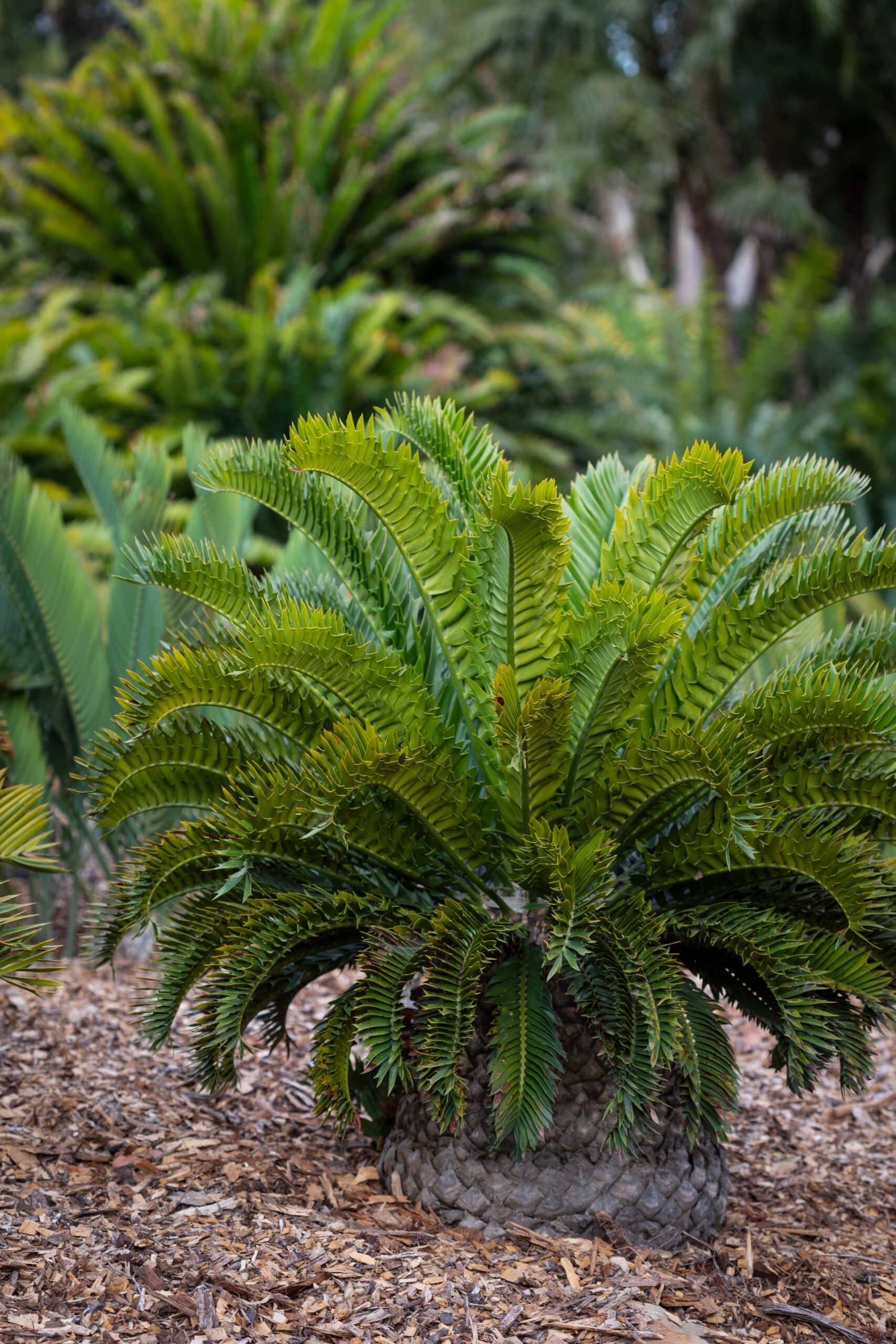
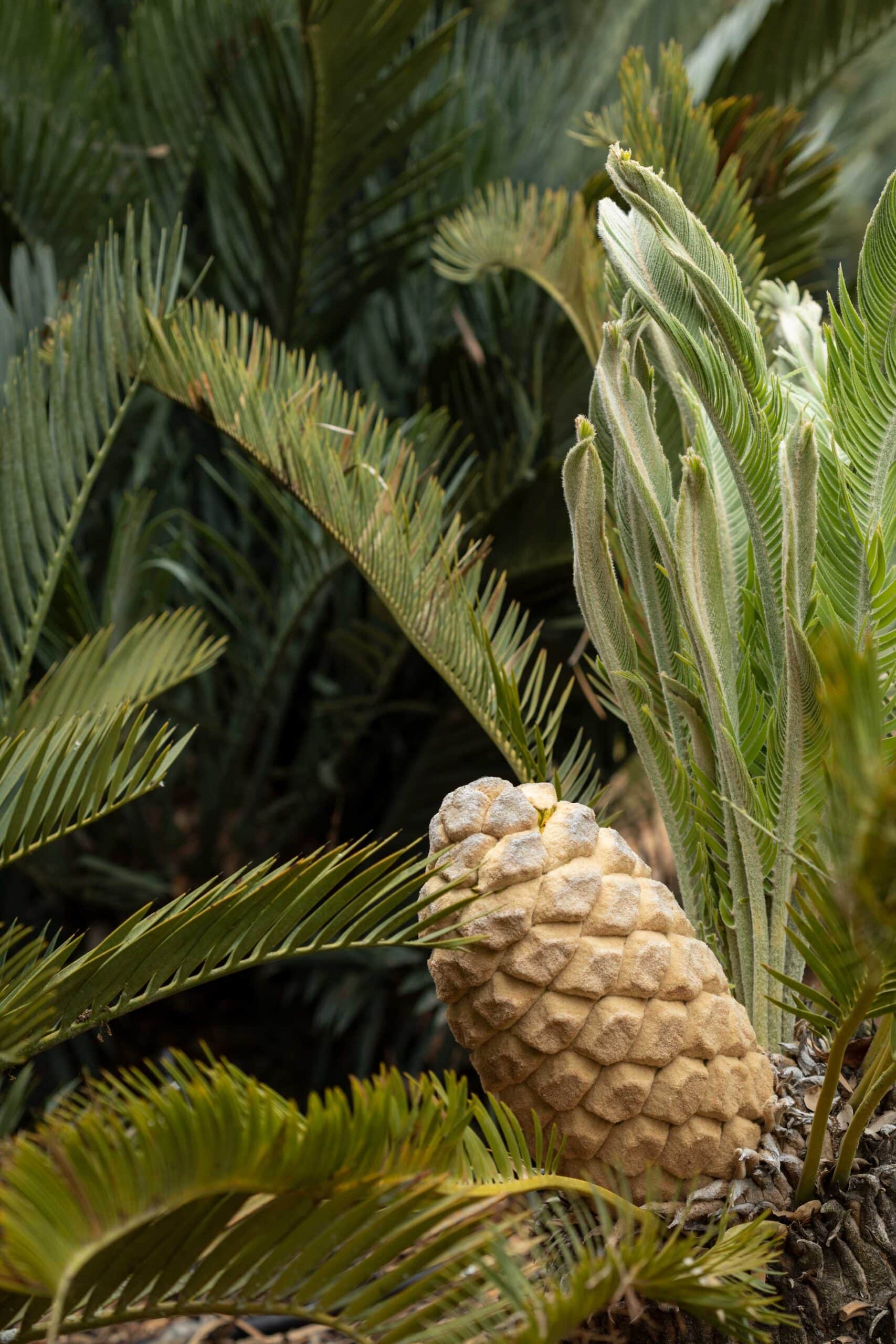
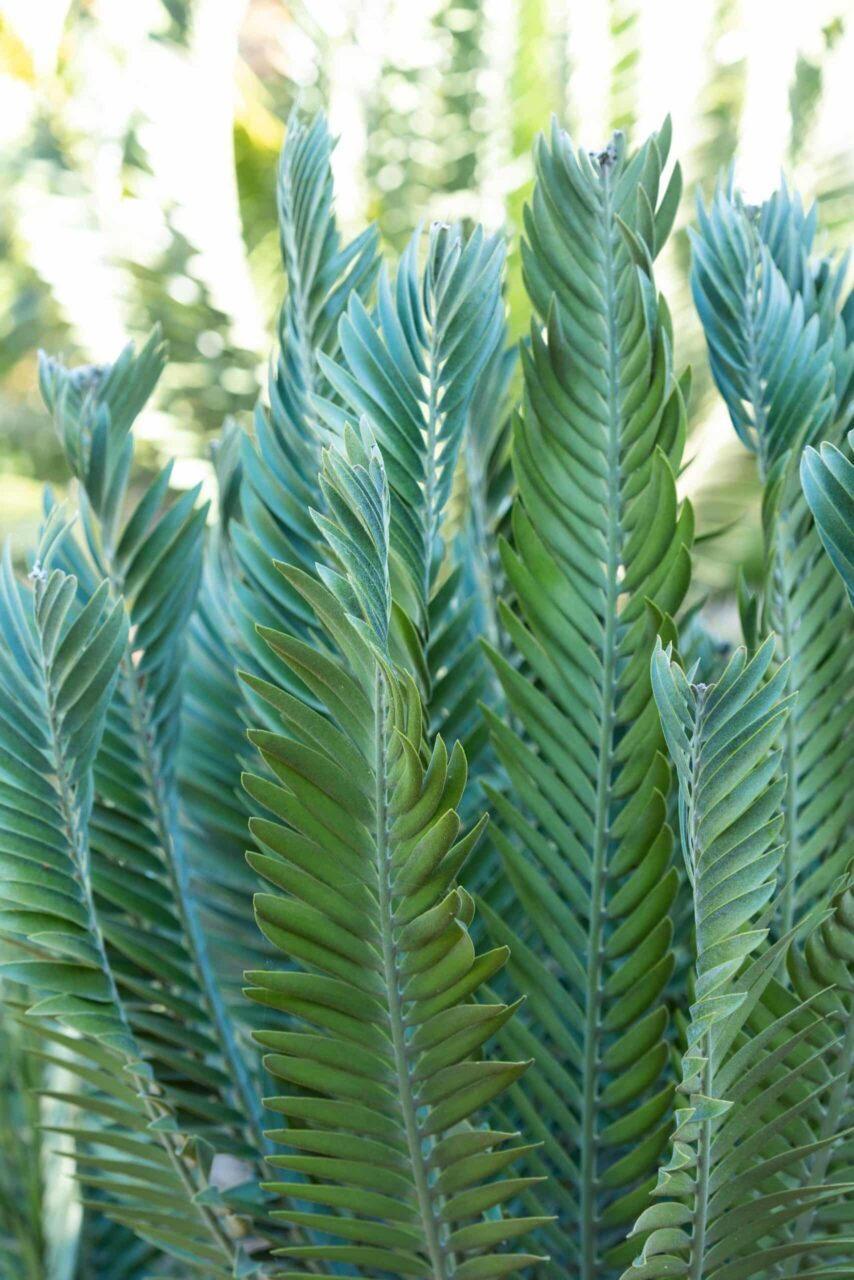
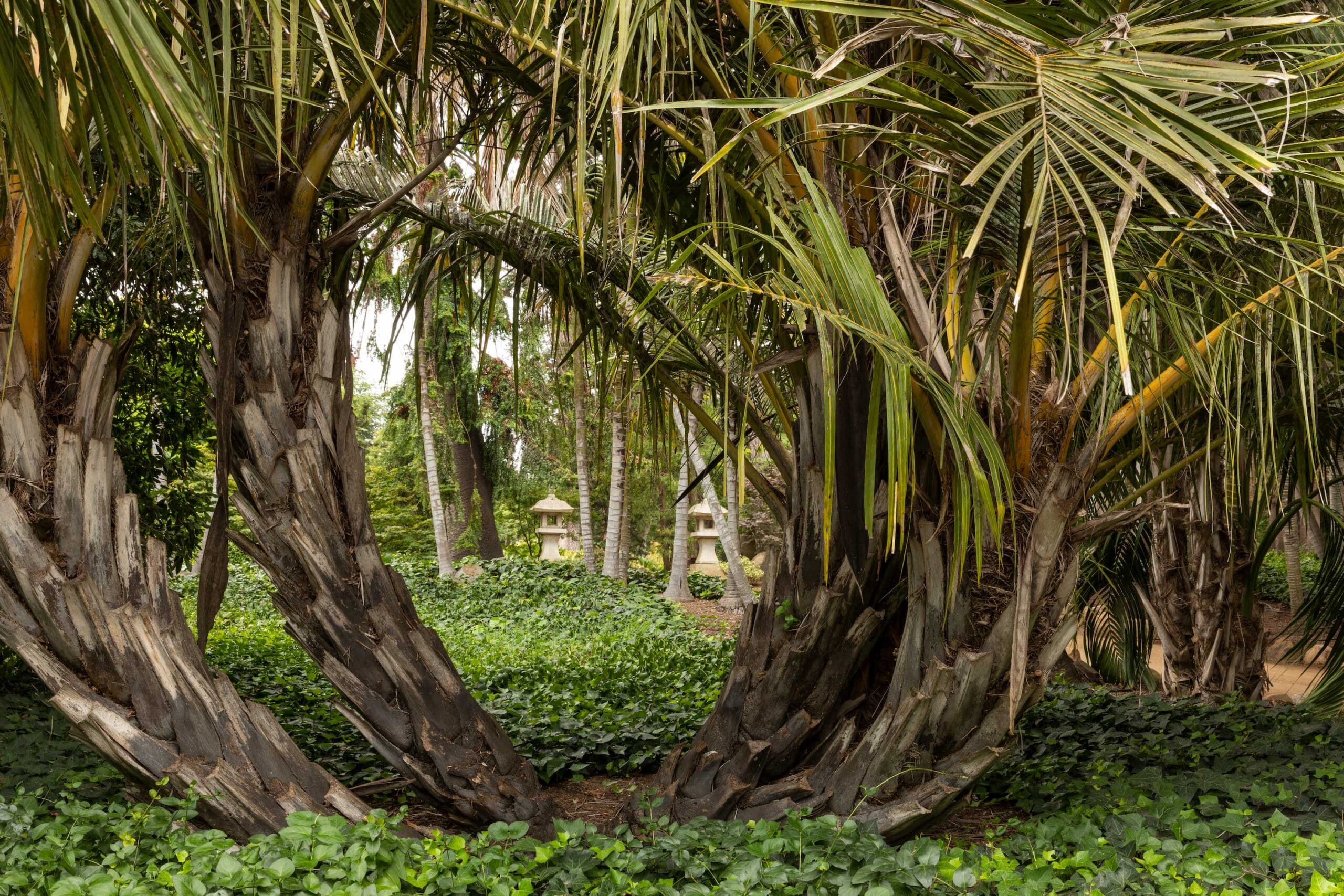
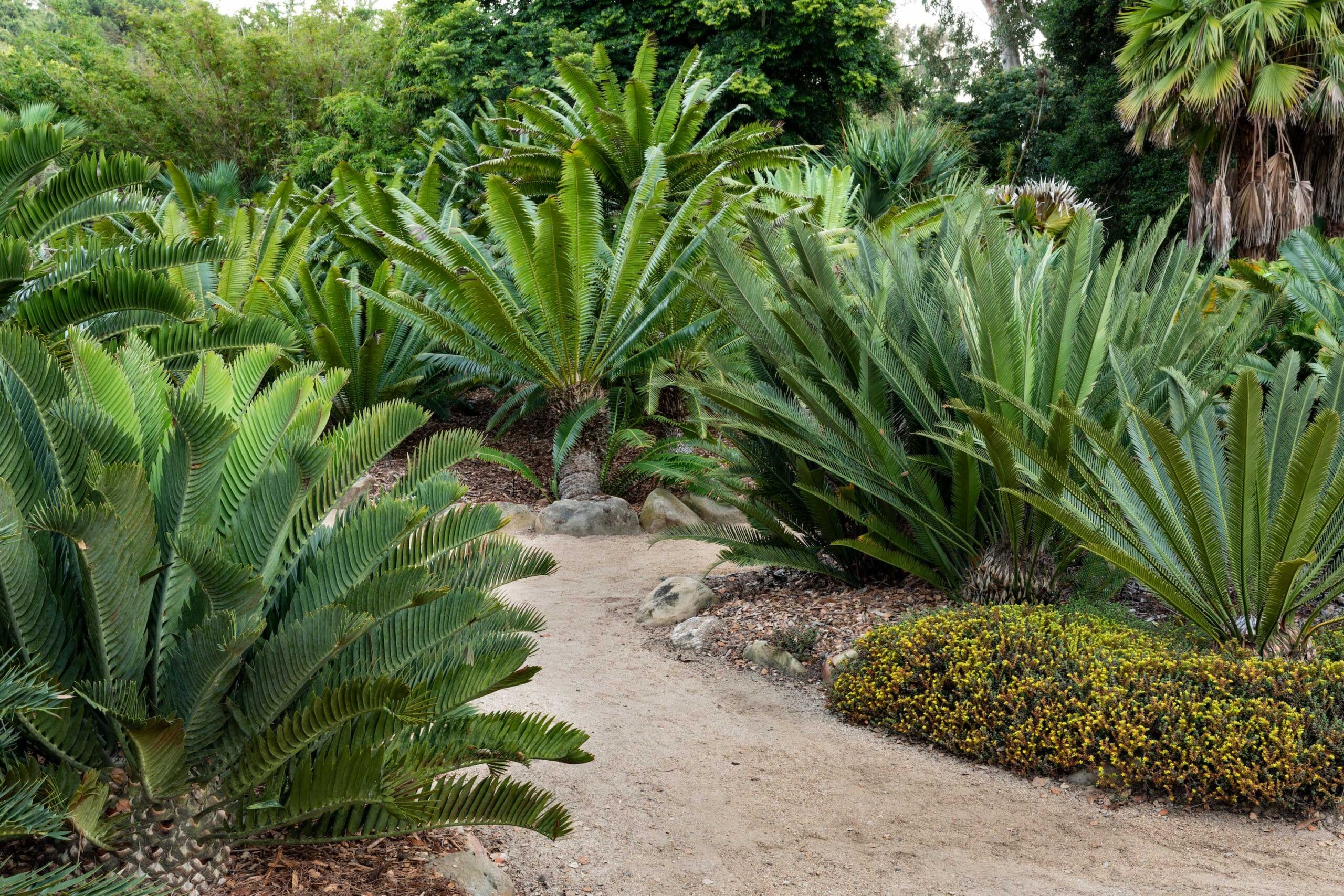
Sago Palm (Cycas revoluta)
Known as sago palm, this rugged cycad is grown by the thousands for the nursery trade each year. This common name is a misnomer given it is a cycad, not a palm. Cycas revoluta has stout trunks and stiff, feather-like leaves that bring a touch of the ancient to lawns and gardens in Santa Barbara and beyond.
Of Beetles and People
Cycad reproduction provides an intriguing look into the sophistication of plant evolution. Long before flowering plants attracted bees and butterflies, cycad cones were pollinated by beetles. The male cones emit an odor to attract insects, but to avoid over-predation they eventually heat up, sending the insects away. The insects are then attracted to a female cone by similar mechanisms. In the absence of these beetles, our curators hand-pollinate Lotusland’s cycads with a syringe.
Encephalartos horridus
Blue-green foliage and curling spine-tipped leaflets make this South African cycad one of the most aesthetically unique species. Its specific epithet, horridus, means “horrible,” a suitable name given its armor. Similar to the plants in Lotusland’s Blue Garden, E. horridus have a bluish color because of a thick, waxy cuticle that acts as sunscreen.
Design Inspiration
Madame Walska valued her cycads for their dramatic forms and their scarcity in nurseries and gardens (they were very collectable). Today, Lotusland preserves that early vision as well as cooperates with other collectors and gardens in efforts to protect and to propagate the valuable germplasm cycads contain.
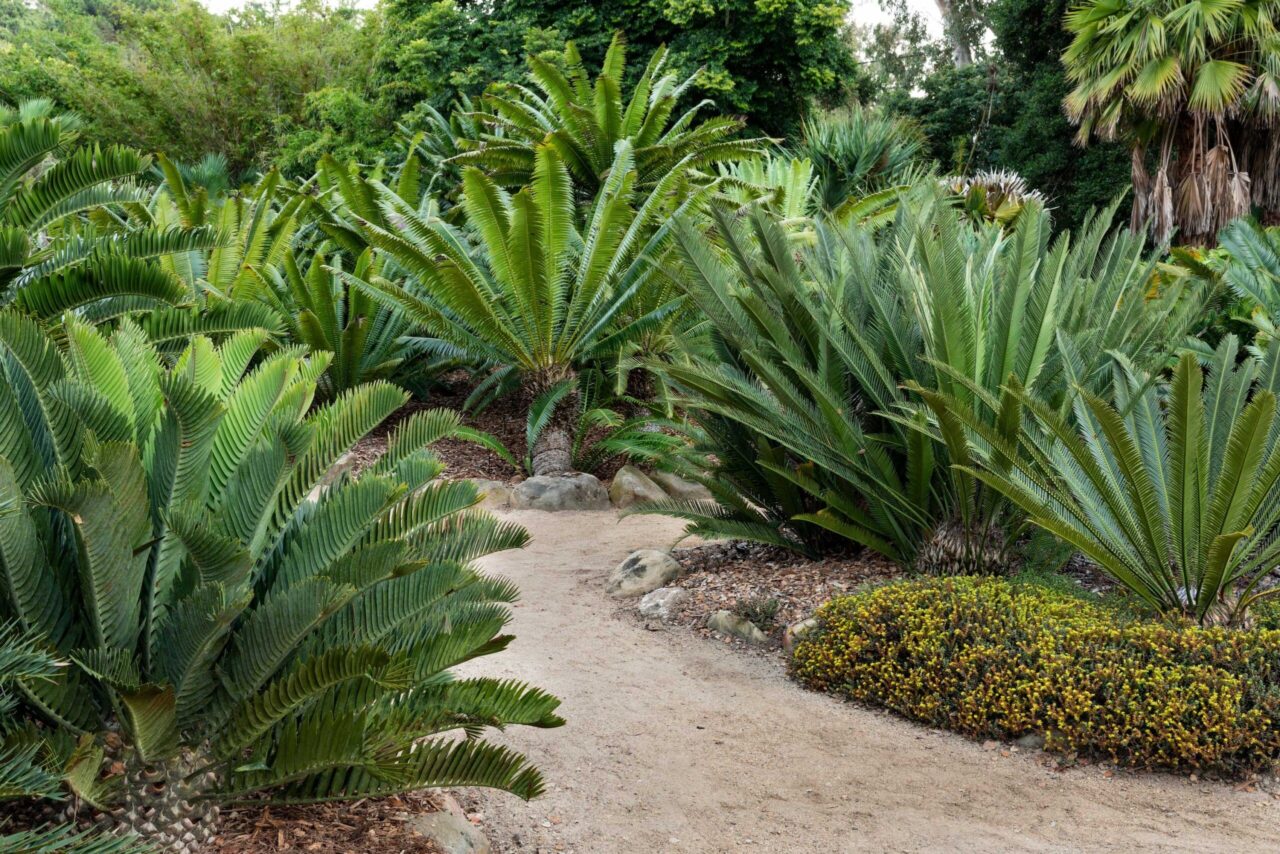
DID YOU KNOW?
Cycads are ancient seed-bearing plants that appeared before the age of dinosaurs, during the Permian period, almost 280 million years ago.
Cycads are classified as “gymnosperms.” Many plants belonging to this ancient lineage are now extinct, but four major groups still remain today. These are the Cycadophyta (the cycads), Gnetophyta (Gnetum, Ephedra, and Welwitschia), Pinophyta (the conifers), and Ginkgophyta (represented solely by Ginkgo biloba, the maiden hair tree).


